By: Mohd Azmi Abdul Hamid
Malaysian Consultative Council of Islamic Organization ( MAPIM )
The problem of the media and perception is real. It can create prejudice. Sometimes prejudice is subtle and often direct. From an inbuilt prejudice, a media player can portray a perception to become a perceived fact.
Western Media more often than not is direct in its handling of news coverage on Islam and Muslims. This is evident in the CNN commentary on the Paris attack. An attack by two individuals who have seen to reflect and related to 1.6 billion Muslims. CNN has explicitly potrayed its prejudice by claiming they had “yet to hear the condemnation from the Muslim community on this…”
Media writers like The Washington Post’s Erik Wemple and Salon’s Jack Mirkinson condemned those who display ignorance in the coverage of commentaries on Muslims and Islam. But far too often, journalists are able to pass off casual bigotry as journalistic inquiry.
Also Read: UN Rights Office Reports 798 Gazans Killed While Seeking Humanitarian Aid Since Late May
It’s not just the fear-mongers at Fox News, who exploit terrorist attacks to fuel anti-Muslim hostility with such consistency . It’s the mainstream media, and while Islamophobia rears its head in print as well as online, it is most pronounced on television.
Make no mistake: When producers dream up panel discussions about whether Islam is a violent religion, they aren’t merely “asking the question”: they’re perpetuating prejudice.
Yes, a good percentage of Americans hold this view, but the role of the media is to dispel such myths — not legitimize them. Ultimately, presenting tolerance and bigotry as equally valid sides of a balanced debate only ends up fueling bigotry.
Islamophobia in media coverage follows a predictable cycle. When someone commits an act of random violence and information is scarce, first comes the warrantless speculation.
Also Read: Arakan Forces Impose Movement Restrictions on Rohingya in Maungdaw
Journalists, especially TV journalists, love scoops. The practice is generally standard, ask leading questions — insinuate, infer, hypothesize , than switch it over to a subject that will create the perception on Muslims and Islam as the source of the attack.In the unfortunate event that an attack is terrorism-related and the perpetrator is a radical Islamist, journalists invariably ask, “Why aren’t Muslims condemning this?”
The irony is all the good things Muslims are doing get ignored while violent actions gets the media limelight. Even when 150 scolars who wrote an open letter on the ISIS was largely ignored by the media.
The media’s default of erasing distinctions between terrorists and non-terrorists, and between attackers and victims in the Muslim world is why we are currently in the midst of a very bias coverage in the media.
Nearly all of the half-dozen or so suspects involved in the Paris attacks were born and raised in Europe. And yet, based on the discovery of a single Syrian passport found near the body of one of the suicide bombers, our current discourse is revolving around whether we should turn away tens of thousands of innocent, suffering people because one of them might be a terrorist.
Also Read: US National Education Association Passes Resolution to Ban Pro-Israel Curriculum in Schools
Instead of relying on credible sources of expertise on the matter, the mainstream media more often gives pundits, who have limited information but a lot of opinions, a platform to disseminate misinformation.
Current major discourse on Islam by the Media
1. Islamophobia and the Media
In the current debate “Imaginary Islam” becomes an ideological weapon. Paradoxically, Islam is not the only target of Islamophobia. This is the conclusion that can be drawn when one studies public discourses produced in France in the last 30 years. From the 1979 Iranian “Islamic Revolution” to the 2004 banning of the “Islamic veil” from state schools in France , an “imaginary Islam” comes with the emergence of the misleading concept of “Islamism” in the 1990’s. This “imaginary Islam” constructed by the media industry and the political forces turned into an ideological instrument that casts suspicion on various segments of the population and creates dangerous censorship effects.
Also Read: Zohran Mamdani Affirms Full Support for Palestine and Zionist Boycott Movement
There is ample resources to examine contemporary arguments about Islamophobia and how they relate to issues such as world conflict and the manner in which this is represented in the mass media. Specific examples from the Israel oppression on the Palestinian could be gather by the media and also points to what can be done to better inform the public on the Palestinian struggle.
2. Islam and Popular Entertainment .
There is a whole range of techniques in visualizing Islam Muslims in the Western entertainment industry. It cannot be ignored how visual images is a powerful way how media has become a strategic tool to depict how the subject wants to be perceived.
The Image of Arab Muslims in the 1970-80s were depicted in the English Popular Fiction: Clash of Cultures or Religions?”. After the 1973 Arab-Israeli War and due to the oil embargo which Arabs imposed on the West, the image of the Arab character in English popular fiction changed mainly from a bloodthirsty terrorist towards a more distorted one. This new picture was related to a Western fear that the unprecedented Arab wealth could be used in endangering the West’s interests in the region and sometimes in the West itself. Hence, the image of a wealthy Arab womanizer, who was stupid and debauched, appeared. Then, he would be generally transformed into a Muslim fanatic determined to destroy the Western dominance in his country.
Also Read: Macron Urges Joint France-UK Recognition of Palestinian State
Popular fiction writers dealt with this new image because they simply reflected the prevalent stereotypes in their societies, yet they emphasised the shortcomings of the Arab culture particularly in relation to intercultural marriages and the treatment of women. Novels: Harold Robbins The Pirate (1974), Maggie Davis The Shiek (1977), Michael Thomas Green Monday (1980), and Laurie Devine Saudi (1985), and it makes some references to other similar novels.
As a matter of fact, the rhetoric of those novelists implies that the cultural problems like maltreating women are widespread among all the members of the Arab societies, and they are directly linked to Islam. This overgeneralization technique is partly due to ignorance of the Arab culture and prejudice against Islam.
Unlike the majority of Arab writers who relate the shortcoming of Western cultures to their secular orientations and never to their Christian roots, many English popular fiction writers relate the shortcomings of the Arab culture to Islam and try to interpret the events and the motives of the characters accordingly.
In “The Conversion to Militant Islam in Film and Literature in France” is evident on how a character’s conversion to political Islam is presented and contextualised in three different narratives which have been either moderately or very successful with the public and critics in France. In a television siries in France , despite the different geographical and cultural settings for the narratives – Paris, Algiers and Cairo – a common thread is visible in the way in which the decision of key characters to engage in political activity under the banner of radical Islam is represented.
While each of the series describes social and economic injustice, hardship and frustration, the key element in the person’s “conversion” to extremism is in fact violence – the experience of violence and the participation in acts of violence. Thus the decision to engage in a form of political action – whether terrorism or community activism – is detached from the experience of injustice and discrimination and placed in the domain of the psychological. The traumatised, socially isolated or manipulated characters lend support to the perception of politically engaged Muslims as irrational fanatics on the one hand, hopeless utopians on the other.
Also Read: Prabowo and Lula da Silva Discuss UN Reform
3.Women and Islam.
The representation of Muslim women in the media is almost sterotype . Bushra H. Rahman on “Images of Muslim Women: A Case of International Magazines Time and Newsweek, 1979- 2002” depicted this .The author departs from the generally assumed assumption that media texts do not “mirror” realities as is sometimes believed; they constitute versions of reality in ways which depend on the ideological disposition, social positions, interests and objectives of those who produce them.
Some scholars argue that the way this powerful organization, particularly the Western media, has misrepresented Islam and Muslims only reflects a good deal of bias and ethnocentrism. The images of the Muslim female in particular have been systematically dehumanized and disincarnated.
The study of the images of Muslim women has become particularly pertinent in the present political scenario where the wide impact of religion on politics is evident, especially since the Islamic revolution in Iran in 1979. At the same time the threats to the Western world from the Muslim world are being asserted.
A popular view of ‘clash of civilizations” between east and west is projected in the works of Samuel Huntington in 1993. The proposition is that the most serious threats to the West, is Islamic “fundamentalism” and that the values of Islam have more than superficial resemblance to European fascism. However, Huntington’s work is severely criticized by Said in 2003 as “a recycled version of the old war thesis, that conflicts in today’s and tomorrow’s world will remain not economic or social in essence but ideological, and if that is so then one ideology, the West’s , is still point or locus around which for Huntington all others turn”.
There is an urgent necessity to understand how the construction of identity, in the present case Muslim women, is bound up with ideological bias and power and to uncover how systematically, in a particular historical and socio-political context stereotype images of Muslim women are framed in the media. The media practitioners should examines how and in what context Time and Newsweek magazines constructed the images of Muslim women from the year 1979 till 2002.
Also Read: US Sanctions UN Expert Francesca Albanese Over Israel Criticism
How do the Islamic Media Establish an Alliance.?
1. Establishing a common goal.
There is a need to define the goal of the Islamic media . The establishment of truth and justice must be the cardinal goal both as an approach and also as a tool. It is on this basis that Islamic media must co exist which should transcend the goal of profiteering through media investment. The goal should become the framework for the Islamic media collaboration making it a media network with a purpose. The ultimate purpose is relaying the truth and establishing justice . Establishing a common goal to build a coorperation between Islamic Media starts with the acceptance of the nubuwwah mission of which all purpose must converge to a single unifying purpose of creating a just society and a society with a sense of submission to the Creator.
2. Exchange of reports
The media is faced with the criss crossing of breaking news. Any media that commands the ability to be on the spot of events , gets the advantage . But an Islamic media is not just about getting news scoop but more about how news are presented and analyzed . The current media tendency is to infer and insinuate news especially those that carry the subject on Islam and the Muslims. Cross examining through exchange of reports is vital if Islamic media are to serve the ummah through an enlightening report and not creating confusion. Exchange of reports should be to verify authenticity of news and to undergo the test of truthfullness. The most basic principle of an Islamic Media is to be consistent in holding the truth in its communication at all levels.
3. Activating communication relay.
With the current speed of infomation flow there is no way any main media players will be able to claim exclusivity of information. It will be about how indepth and how news coverage will be able to be presented in the most interesting and capturing manner. Islamic media will be competing for readers and viewers . While extensiveness of readership and viewship is a measure of popularity of a media , nevertheless the main concern for an Islamic media alliance is how far it will strengthen the mission for potraying the truth. Relaying informations is a basic function , but relaying to educate and to arose an interest to act is the biggest challenge for an Islamic media collaboration. An active communication between media partners is crucial as this will create a functional network of which Islamic media can play an effective role.
Also Read: Heat Wave Across Europe Causes 2,300 Deaths, Study Finds
4. Maximizing the use of social media.
It cannot be denied the wide divergence of the types of media currently , present an opportunity of a creating a connection between Islamic media. Social media as it is seen today is a fast and dynamic medium which can create its own population of viewers. The one strenght that social media can be a powerful tool is its interactive character. The interaction can be enriching and so it also could be viral . The dynamics of social media should be capitalised to the fullest. Every message can trigger a ripple effect . If managed in a strategic engagement with those who are involved in the media industry , social media could be a powerful tool to engage with viewers in a direct manner.
5. Understanding the common terminology.
The language and terminologies are sets of medium that gives particular impact on viewers and readers. More often than not , every journalistic work and news broadcasting are trained to convey messages with carefully chosen terms for purpose of influencing how news are perceived. It becomes the basis for understanding and analyzing news as it is conveyed. The crucial stage is when media is directed to present the messages in a way comply with the powers that be. News are suppose to enlighten or to reveal the truth. This can only become a feature if a correct set of terms with a correct way of presentating of news reports are established .
6 Consolidation
Cost-sharing is a common practice in monomedia and cross media. What is needed is homogeneity held in common ownership . The more elements within a programme schedule which can be shared between ’different’ stations. , the greater the opportunity to get more viewers. This may not be the practice of pluralism in media , but what Islamic media should be more concern is a commoness in the exposition of truth.
The challenge now is there is a phenomenal concentration of media ownership (also known as media consolidation or media convergence). Progressively fewer individuals or organizations control increasing shares of the mass media. Increasing levels of consolidation, with many media industries already highly concentrated and dominated by a very small number of firms.
Also Read: Top Economists Defend UN Gaza Report, Expose Global ‘Genocide Economy
Globally, large media conglomerates include Viacom, CBS Corporation, Time Warner, 21st Century Fox and News Corp (the former News Corporation, split in 2013), Bertelsmann AG, Sony, Comcast, Vivendi, Televisa, The Walt Disney Company, Hearst Corporation, Organizações Globo and Lagardère Group.
As of 2015, Comcast Corporation is the largest media conglomerate in the US, with The Walt Disney Company, Twenty-First Century Fox and Time Warner ranking second, third and fourth respectively.(L/P008/R07)
Mi’raj Islamic News Agency (MINA)
Also Read: Trump Approves New Weapons for Ukraine, Weighs Tougher Sanctions on Russia






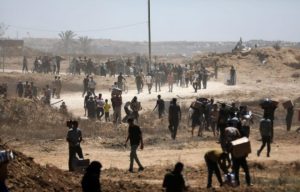






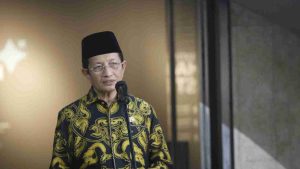

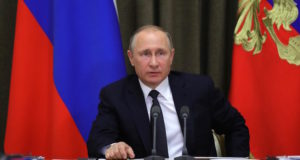

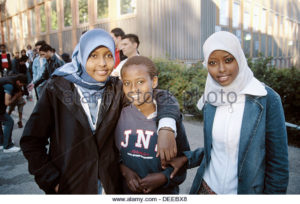

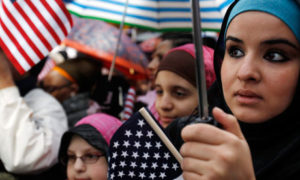





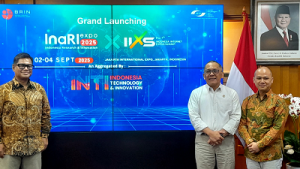

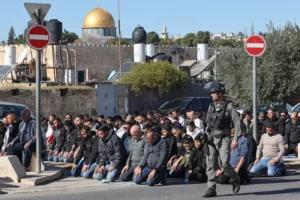

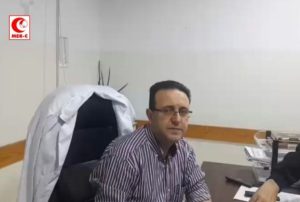
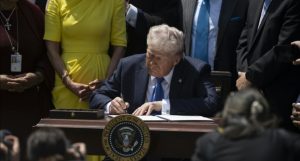

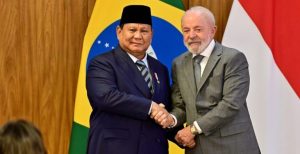



 Mina Indonesia
Mina Indonesia Mina Arabic
Mina Arabic